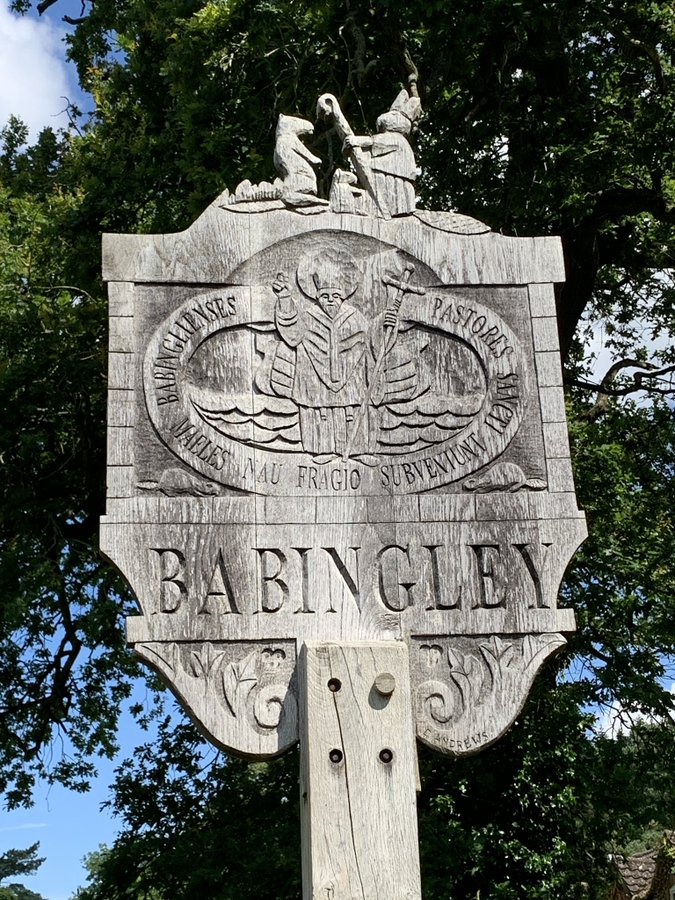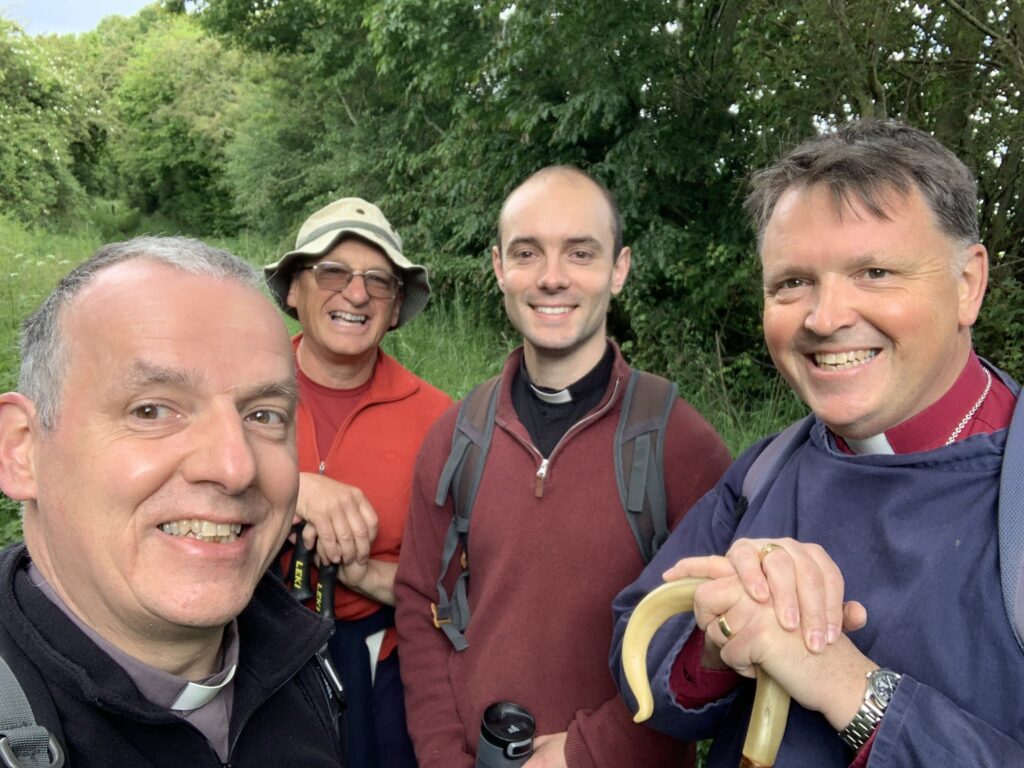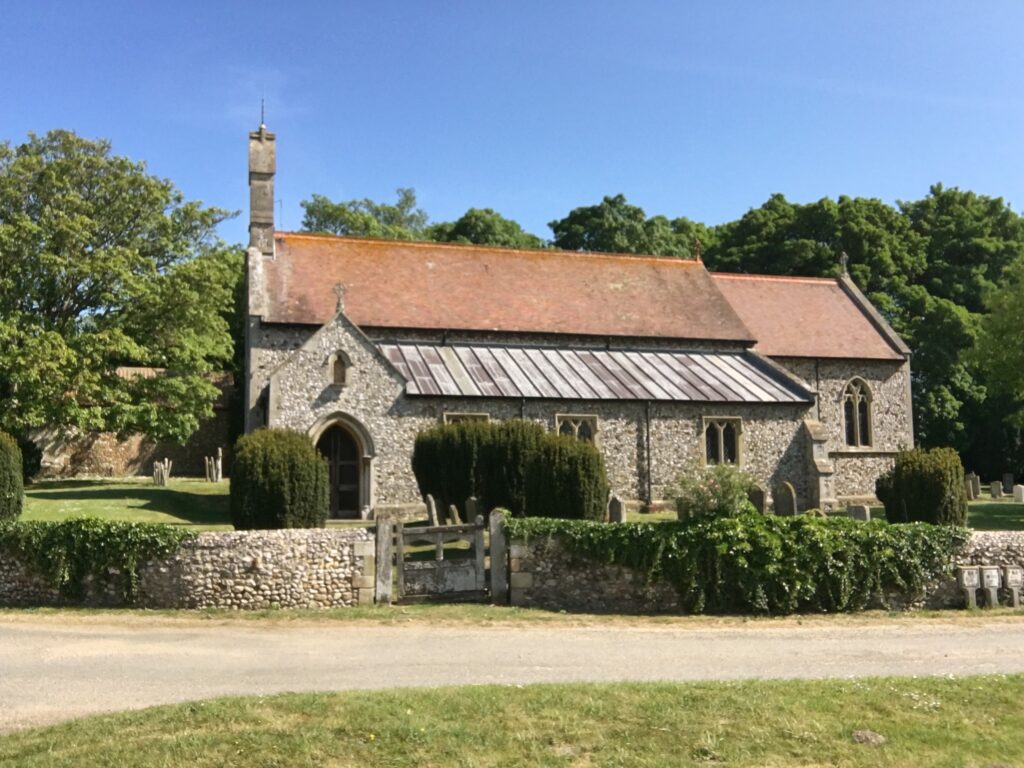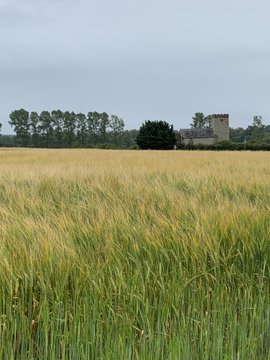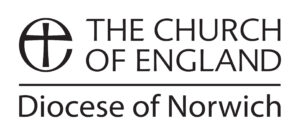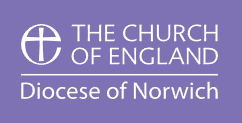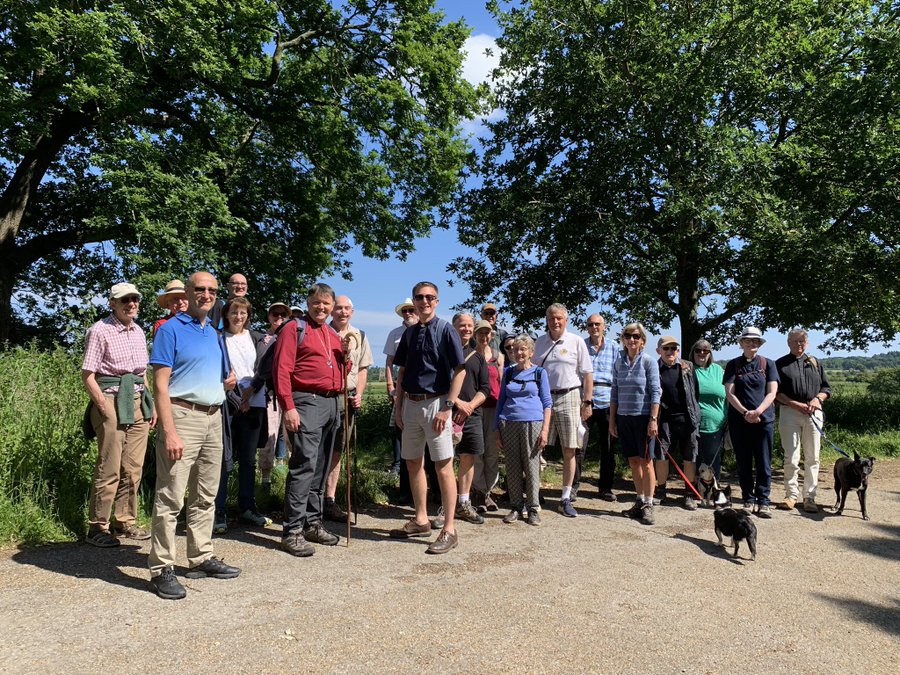Walking in the footsteps of ancient saints and alongside the people of 21st century Norfolk, the Bishop of Norwich explored his diocese as a pilgrim this summer.
The Rt Rev Graham Usher met schoolchildren, local people, clergy and churchwardens, bellringers and fellow-walkers during the pilgrimage days.
Travelling by tractor, train and car as well as on foot, he also travelled in time from the arrival of Christianity on the western shores of his see to some of the triumphs and challenges of the present day.
On a pilgrimage day in the Heacham and Rising deanery Bishop Graham joined local people and visitors to walk from Castle Rising to Sandringham, and then on to Shernborne, for a service in the ancient church.
The paths he walked might one day be part of a pilgrimage route celebrating Norfolk’s connection with St Felix, who arrived in west Norfolk by boat almost 1,400 years ago, bringing Christianity to East Anglia.
St Felix is said to have been saved from shipwreck and guided to safe harbour in the tiny riverside village of Babingley by a beaver – and was so grateful he ordained the beaver as a bishop.
The legend is celebrated on the wooden village sign which features a beaver with a mitre and crook above a carving of St Felix.
Historians are on firmer ground with St Felix himself, who established Norfolk’s first Christian church at Babingley around 630AD and became the first (human) bishop of the kingdom of East Anglia.
The Revd Mark Capron, rector of Dersingham, hopes there could one day be a permanent pilgrimage route, the St Felix Way, from Castle Rising, via the churches at Bablingley and Shernborne, to Walsingham, joining the Walsingham Way to Norwich.
During the pilgrimage day Bishop Graham also met primary school pupils at Ingoldisthorpe, took part in a service and Q&A session at Snettisham and climbed the church tower at Heacham to admire the cupola which has been beautifully restored by local craftsmen as part of the village’s Bellcote and Bells project.
Heacham has the oldest bell in Norfolk, dating back to around 1150, and will soon have the newest too, when the old bell (which can no longer be rung and will be displayed in the church) is replaced by the new Coronation Bell, commemorating the coronations of King Charles and Queen Camilla.
When he visited Breckland the Bishop stepped even further back in history to walk part of Peddars Way. It was already an ancient route when the Romans used it. Bishop Graham visited the Howard Carter exhibition in Swaffham Museum, celebrating the Swaffham man’s discovery of the tomb of Tutankhamun. He also met town councillors who talked about issues in the expanding town.
Breckland Rural Dean Stephen Thorp said: “As this was a walking pilgrimage, we then walked four-and-a-half miles along the Peddars Way an ancient pilgrimage route culminating at St Mary’s, Houghton-on-the-Hill where the Bishop was shown the ancient wall paintings depicting the Trinity, one of the earliest ever found in Europe.”
In Ashill he was shown the newly rebuilt houses, following the devastating fire which hit on the hottest-ever day in July 2022 and destroyed 11 homes in the village and badly damaged many more.
In Watton Bishop Graham met children at the junior school where almost half the pupils have English as a second language. He visited the banking hub which he had told fellow members of the House of Lords was vital for a town which had lost high street banks.
The day finished with an evening service and Q&A session in Necton church, with discussion of subjects including welcoming refugees, the burdens carried by churchwardens and putting mission at the top of the agenda.
Stephen said: “Everybody was very pleased to meet Bishop Graham, ask him questions and delighted to pray with him along the route. It was lovely to spend time with him.”
During a pilgrimage day in the Burnham and Walsingham deanery the Bishop joined parishioners to walk from Tattersett to Syderstone, and Thursford to Fulmodeston, meeting people in local churches and along the way.
He took the train along the Wells and Walsingham Light Railway, visited the ancient church of St Clement’s, Burnham Overy, and finished with a songs of praise service at St Bartholomew’s, Brisley.
The Revd Clive Wylie, Rural Dean of the Burnham and Walsingham Deanery, said: “When I was asked about the deanery pilgrimage I had three very clear aims, firstly that Bishop Graham would get to set foot in every benefice of the deanery; secondly that we would avoid the churches that would normally host a bishop and visit some of the more ‘out of the way places’…and thirdly it would be a day for the laity to meet their bishop.
“From the feedback I received we seem to have achieved all three. Having Bishop Graham with us in the deanery for the day was a real privilege.”
Bishop Graham is planning more pilgrimage days next year. He said the days were a chance to meet and walk alongside people, celebrating achievements, hearing concerns and answering questions. “It was a joy to talk to so many people on their home ground, to slow down to walking pace to truly see the beauty of Norfolk’s landscapes and hear how people across the diocese are working for God’s kingdom.”
